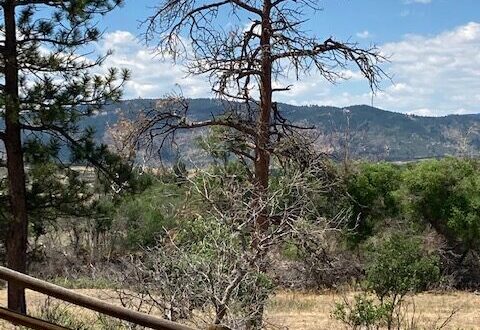Forest Health Issues in Northwest Colorado
The best way to protect the Colorado forests from pests is to split the area into four sections. There are different pests more prevalent in some areas over others. Northwest Colorado has three types of pests that the
The CSFS looks for ways to mitigate the issues caused by pests to minimize infestations. This is also important to prevent trees from becoming susceptible to forest fires.
Douglas-Fir Beetle
One of the biggest concerns in the area is the Douglas-fir beetle. This is a pest that has affected other parts of Colorado as well, but it’s affected around 3,025 acres in the northwest in 2021. The drought conditions have led to an increase in activity.
The native bark beetle loves Douglas-fir trees, as the name would suggest. It’s been spotted in pockets across Eagle, Garfield, Mesa, Pitkin, Routt, and Summit counties. The best thing for the CSFS to do is to thin out the forests, helping to promote a diversity of tree species. The use of pheromone (semiochemical) packets on the Douglas-fir trees has also helped to deter beetles from the area.
Locals are also working with the CSFS to help mitigate the problem. The CSFS has guides and tips to help reduce the spread of the beetles in the area.
Pinon Ips Beetle
A bigger concern than the Douglas-fir beetle is the pinon Ips beetle. This has affected almost 13,000 acres of forest in 2021, attacking the pinon pines in western Colorado. Like with the Douglas-fir beetle, the drought conditions have increased the attacks.
Forests around the Glade Park and Gateway Canyon are most affected, with the forests losing a significant amount of the mature pinon trees in the area. At the rate the beetle is going, only the junipers are surviving in the forests, which is a huge concern.
Beetles have now been spotted in Delta County’s Cedaredge area and Garfield County’s Rifle and Glenwood Springs. Treatment is costly, but it is critical to prevent the total loss of pinon trees.
Western Balsam Bark Beetle
A major concern across the higher elevation forests in northwest Colorado is the western balsam bark beetle. It’s responsible for the loss of 21,300 acres of forest in 2021, with the subalpine fir seeing the biggest decline because of the beetle.
You can tell when the trees have been affected. They turn red because of the beetle and fungi that cause root decay. The beetle will attack both young and mature trees, and you’ll see the destruction around Rabbit Ears Pass and Buffalo Pass in the Routt National Forest, across north Routt Country, in the Grand Mesa National Forest, and around Rio Blanco County the most.
CSFS is working on mitigating the problem by removing infested trees before the adult beetles fly to new homes. There are also some management strategies to counteract the beetles, but these are difficult to use because of the spotty nature of the infestations.
